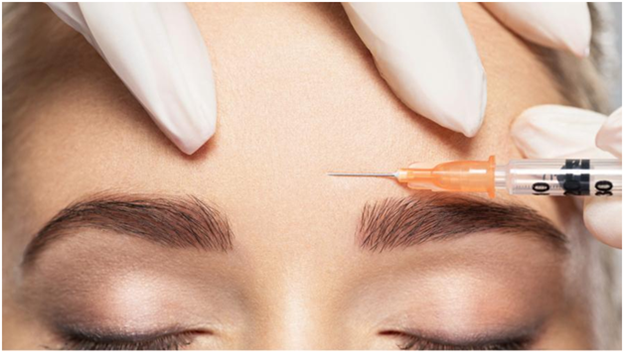Botox, a widely recognized name in the field of cosmetic treatments, has transformed the way we approach the reduction of wrinkles and fine lines. Understanding the science behind Botox not only demystifies its effects but also highlights its efficacy in providing a youthful appearance. We will take a deep dive into the biological mechanism of Botox and how it helps in reducing wrinkles and fine lines.
What is Botox?
Botox, short for botulinum toxin, is a neurotoxic protein produced by the bacterium Clostridium botulinum. Although it is known for its cosmetic applications, Botox has various medical uses due to its ability to cause temporary muscle paralysis. This property makes it an effective treatment for a range of conditions, from chronic migraines to excessive sweating.
The Biological Mechanism of Botox
How Botox Interacts with Muscles
Botox works by targeting the nervous system, disrupting the nerve signaling processes that cause muscle contraction. When Botox is injected into specific muscles, it blocks the release of acetylcholine, a neurotransmitter responsible for signaling muscle contractions.
The Role of Acetylcholine
Acetylcholine is a chemical messenger that transmits signals from nerve cells to muscle cells. Under normal conditions, nerve endings release acetylcholine into the neuromuscular junction, where it binds to receptors on the muscle cell, leading to muscle contraction. This process is essential for all voluntary muscle movements.
Inhibition of Acetylcholine Release
Botox inhibits the release of acetylcholine by cleaving SNARE proteins, which are crucial for the fusion of neurotransmitter-containing vesicles with the nerve cell membrane. By preventing this fusion, Botox effectively blocks the transmission of nerve signals to the muscle, leading to temporary muscle paralysis.
How Botox Reduces Wrinkles
Targeting Dynamic Wrinkles
Dynamic wrinkles are formed due to repetitive muscle movements, such as frowning, squinting, or smiling. Over time, these movements cause the skin to fold and crease, resulting in the formation of wrinkles and fine lines. Botox is particularly effective in treating dynamic wrinkles by temporarily paralyzing the underlying muscles responsible for these movements.
Relaxing Facial Muscles
When Botox is injected into the muscles that cause dynamic wrinkles, it relaxes these muscles, preventing them from contracting. This relaxation smooths out the overlying skin, reducing the appearance of wrinkles and fine lines.
Common Treatment Areas
Botox is most commonly used to treat:
- Forehead Lines: Horizontal lines that form when raising the eyebrows.
- Glabellar Lines: Vertical lines between the eyebrows, also known as frown lines.
- Crow’s Feet: Lines around the eyes that appear when smiling.
Preventing the Formation of New Wrinkles
In addition to reducing existing wrinkles, Botox also helps in preventing the formation of new wrinkles. By limiting the repetitive muscle movements that cause dynamic wrinkles, Botox minimizes the stress placed on the skin, thereby delaying the appearance of new lines and creases.
The Botox Procedure
Consultation and Assessment
The Botox treatment process begins with a consultation with an expert in Botox treatments. During this consultation, the practitioner assesses the patient’s facial anatomy, skin condition, and desired outcomes to determine the most appropriate treatment plan.
Injection Process
Botox injections are relatively quick and minimally invasive. Using a fine needle, the practitioner injects small amounts of Botox into the targeted muscles. The number of injections and the amount of Botox used depend on the treatment area and the severity of the wrinkles.
Post-Treatment Care
After the injections, patients are advised to avoid strenuous activities and not to rub or massage the treated area for at least 24 hours. This helps to ensure that the Botox remains localized and does not spread to unintended areas.
Duration of Results
Onset of Effects
Patients typically start to notice the effects of Botox within a few days of the treatment, with full results appearing within one to two weeks. The skin appears smoother, and the treated areas show a noticeable reduction in wrinkles.
Longevity of Results
The effects of Botox are temporary, generally lasting between three to six months. As muscle activity gradually returns, wrinkles and fine lines may reappear, prompting the need for repeat treatments to maintain the desired results.
Safety and Side Effects
Common Side Effects
Botox is considered safe when administered by a qualified practitioner. Common side effects include mild pain, swelling, or bruising at the injection site. These side effects are usually temporary and resolve within a few days.
Rare Complications
In rare cases, patients may experience more serious complications, such as drooping eyelids or asymmetry in facial expressions. These complications can often be avoided by choosing a skilled and experienced practitioner.
Conclusion
Botox has revolutionized the field of cosmetic treatments by offering a non-surgical solution for reducing wrinkles and fine lines. By understanding the science behind Botox and how it interacts with the body’s nervous system, patients can appreciate the effectiveness and safety of this treatment. As experts in the Botox field, we are committed to providing safe and effective treatments that help individuals achieve a more youthful and refreshed appearance.

